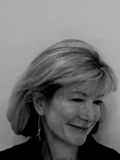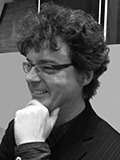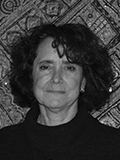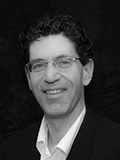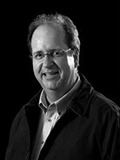Professor David Walters led one of five urban design teams engaged in a large scale block-by-block design and coding project for the historic core and adjacent neighborhoods in Beaufort, SC organized by the City of Beaufort with the Lawrence Group as lead consultants. This innovative design and coding project will result in a form-based code calibrated to detailed site-specific proposals for future development within the historic context.
Walters’ work on place-specific urban design and form-based coding is also featured in a commissioned paper entitled “Smart Cities, Smart Places, Smart Democracy: Form-based codes, electronic governance and the role of place in making smart cities.” This paper, which features a case study of the work in Beaufort, SC, will be published in a special themed issue of the European journal “Intelligent Buildings International.”
Associate Professor Jose Gamez and his collaborative efforts through the Design + Society Research Center was recently awarded a $20,000 matching grant from the City of Charlotte’s Neighborhood Services and Economic Development. The funding augments previous funding from Z Smith Reynolds Foundation and is intended to support efforts to address crime and safety in Windy Ridge, a foreclosure hit neighborhood in NW Charlotte. This on-going, action-based research project has recently been covered by an Associated Press article, featuring the work of faculty and students who aim to help stabilize the neighborhood. The story appeared in The Charlotte Observer, the San Francisco Chronicle, Miami Herald, Denver Post, WRAL in Raleigh, BusinessWeek.com, MSN Money section online, and many other smaller newspapers.
Associate Professor Peter Wong served on the panel discussion “Modernism at Risk: Challenges and Solutions to the Preservation of Modern Architecture” at the Wells Fargo Auditorium in Uptown Charlotte, as part of Historic Charlotte’s “Mad About Modern” Preservation Program. Other panelists included John Boyer of the Bechtler Museum of Art, George Smart of Triangle Modernist Houses, and Robert Ciucevich of Quatrefoil Consulting.
Assistant Professor Jeff Balmer presented “The Diagram & Beginning Design Education” at the 27th National Conference on the Beginning Design Student, hosted by the College of Architecture at the University of Nebraska-Lincoln.
Assistant Professor Chris Beorkrem presented “Material Ecologies in Parametric Design Software” at the
International Conference on Sustainable Design and Construction held on the campus of the
University of Kansas. Also, five student groups from his spring term Topical Design Studio were selected as Finalists in the ShiftBoston Barge 2011 design competition. Each proposal was designed using a combination of off-the-shelf unconventional recycled or “pre-cycled” components in conjunction with digitally manufactured connections.
Assistant Professor Zhongjie Lin received a research grant from the Graham Foundation for Advanced Studies in the Fine Arts (Chicago) for his research project “Constructing Utopias: China’s Emerging New Town Movement.” This is Dr. Lin’s second Graham Foundation grant award. He received a publication grant award in 2008 for his book Kenzo Tange and the Metabolist Movement: Urban Utopias of Modern Japan. The current project will focus on the planning and development of the “model new towns” emerging from the current massive urbanization in China, and study them through the lens of urbanism and utopianism.
Assistant Professor Emily Makas co-authored the book “Architectural Conservation in Europe and the Americas” with John Stubbs of Columbia University, published by Wiley Press. This book serves as the first comprehensive survey that examines in detail architectural conservation practice on a wide comparative basis.
Assistant Professor Nick Senske presented “A Curriculum for Integrating Computational Thinking” at the
ACADIA Regional Conference: Parametricism: (SPC), held at the University of Nebraska, Lincoln.

 Study Architecture
Study Architecture  ProPEL
ProPEL 

